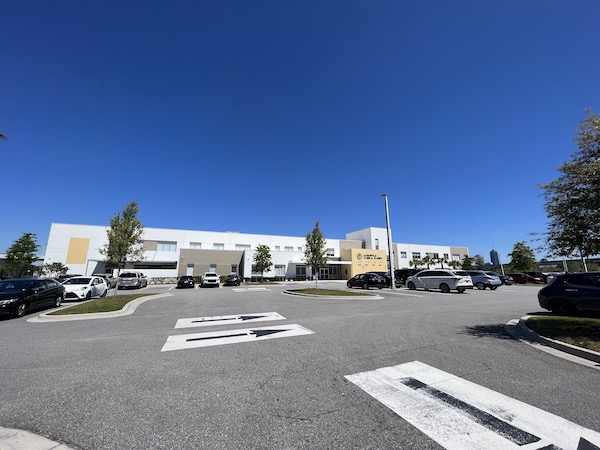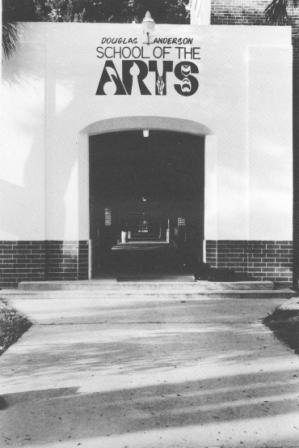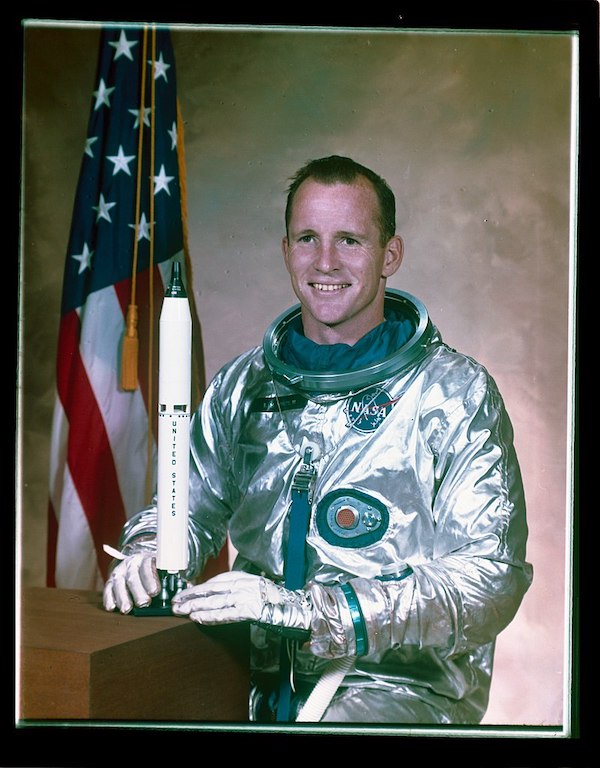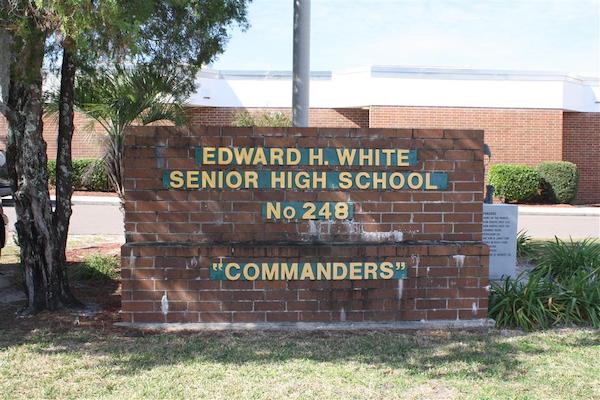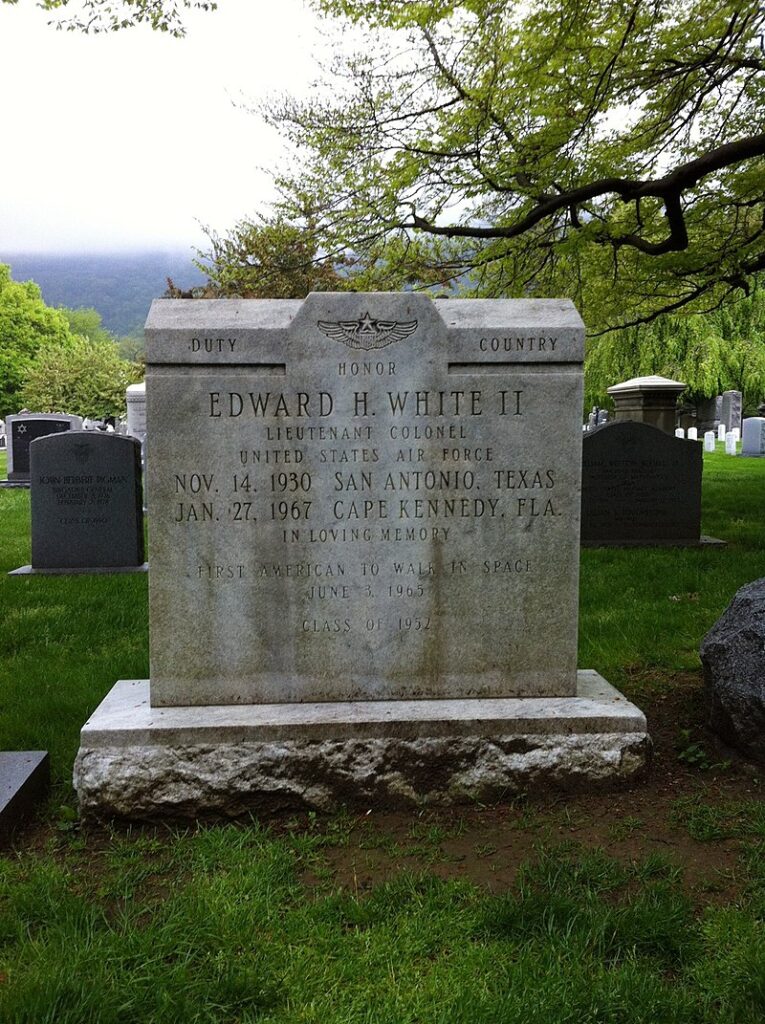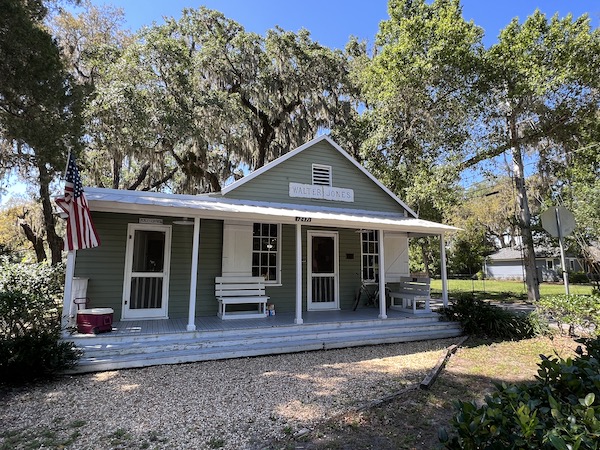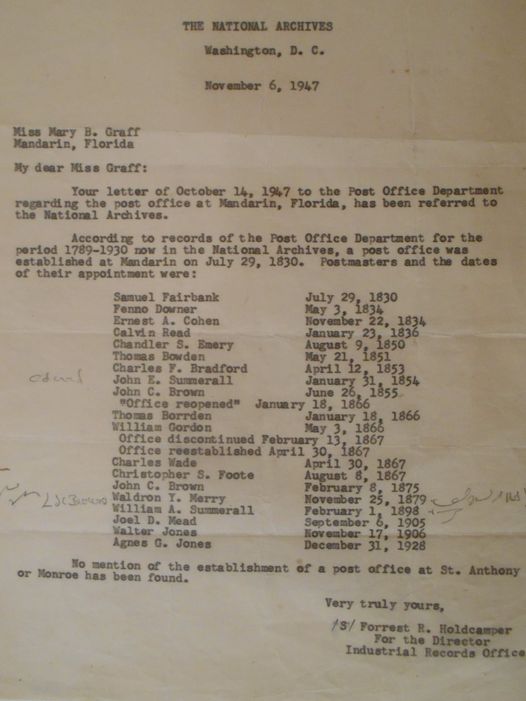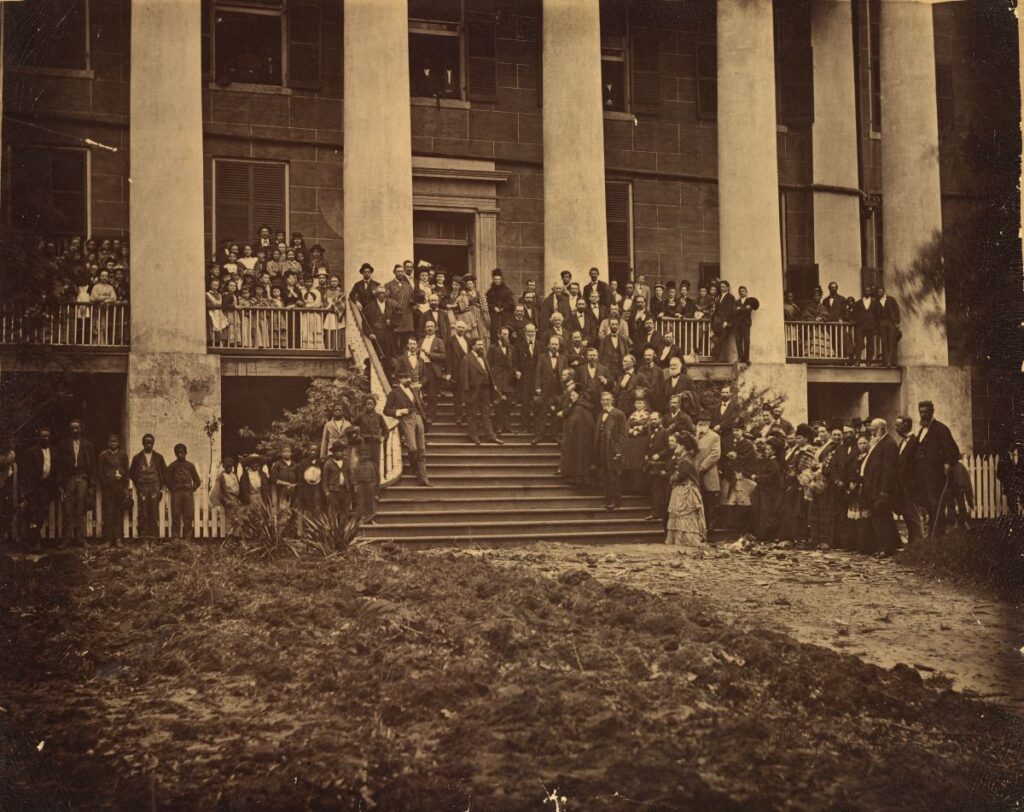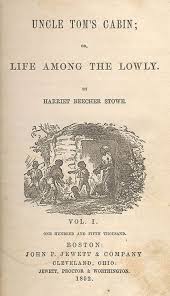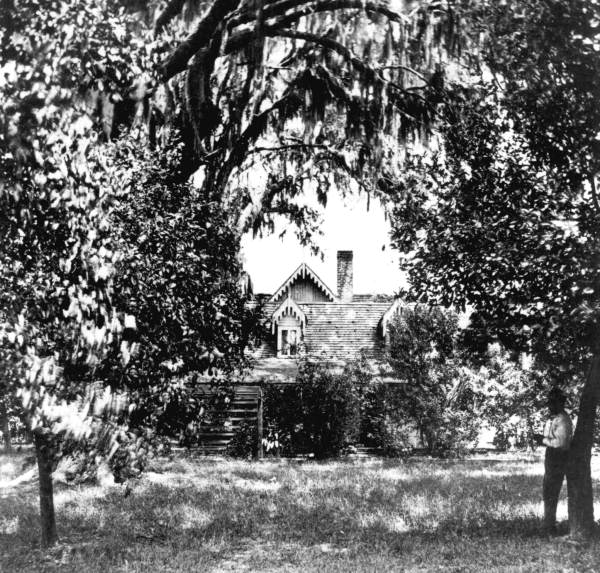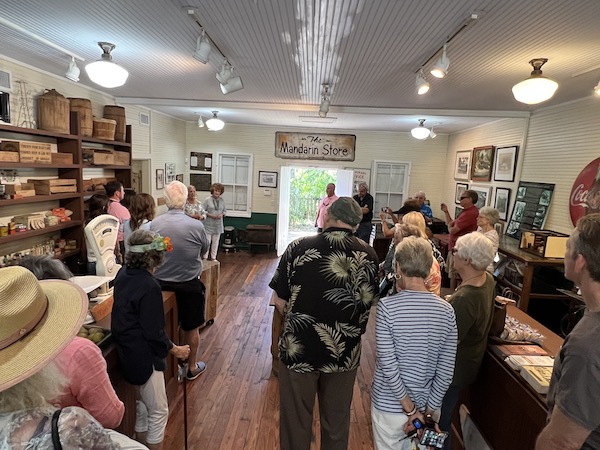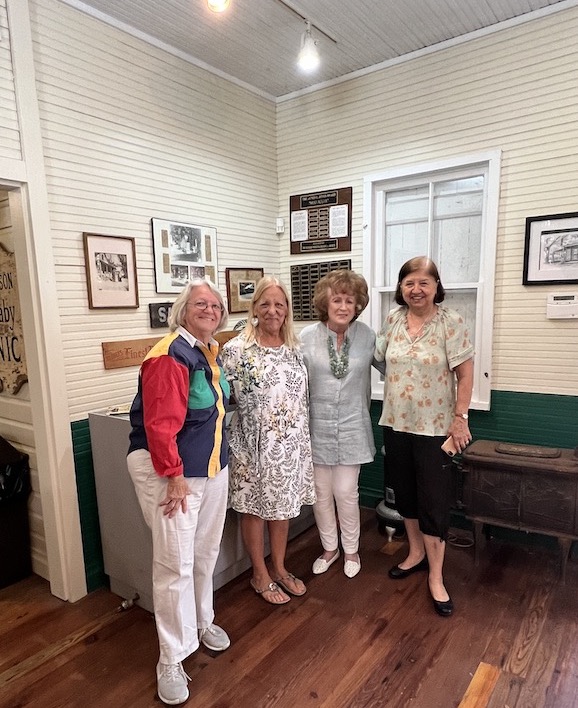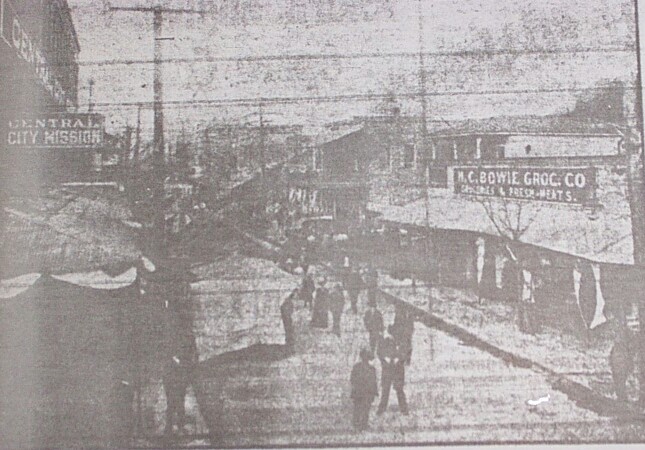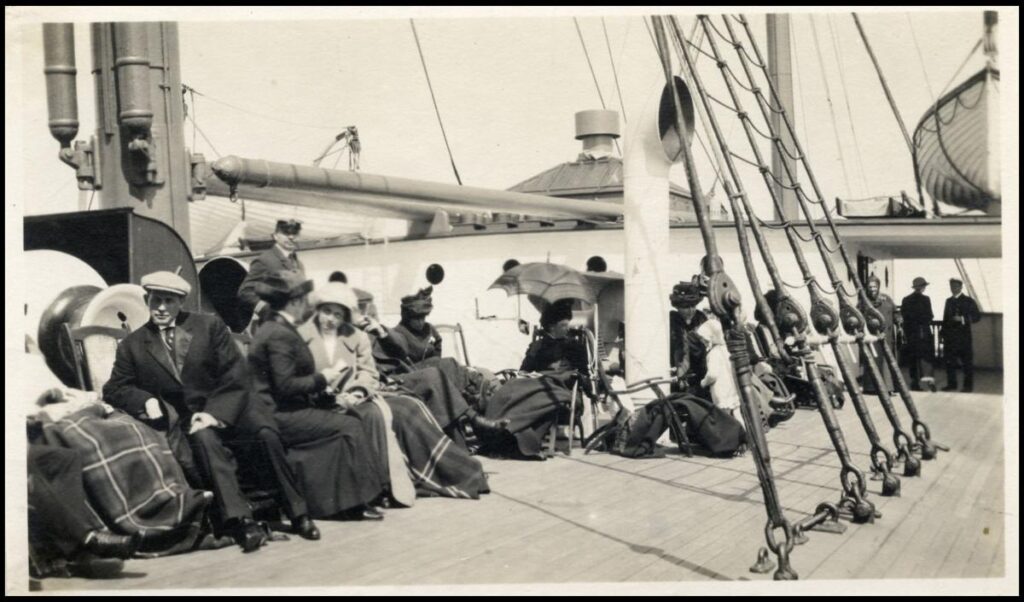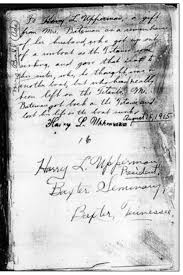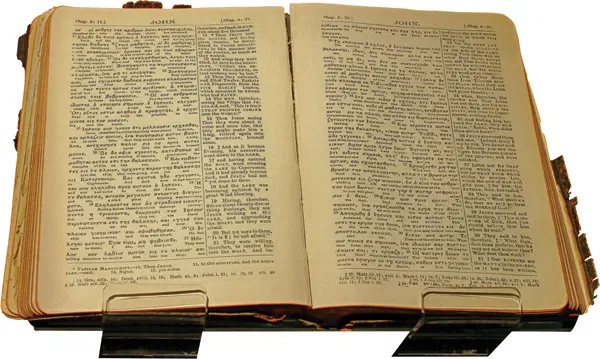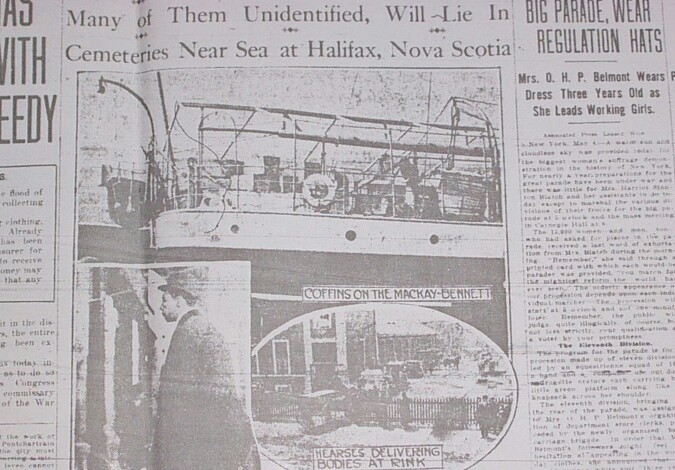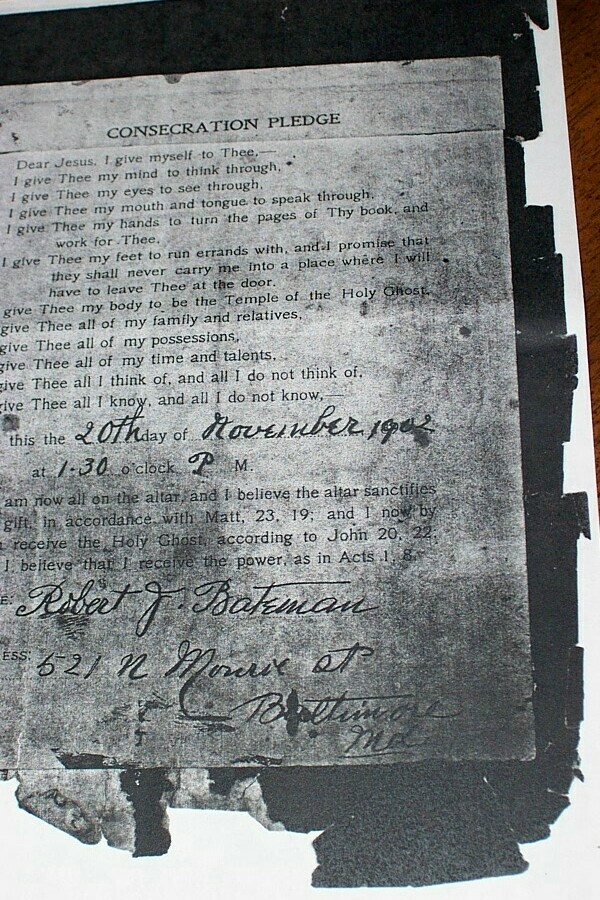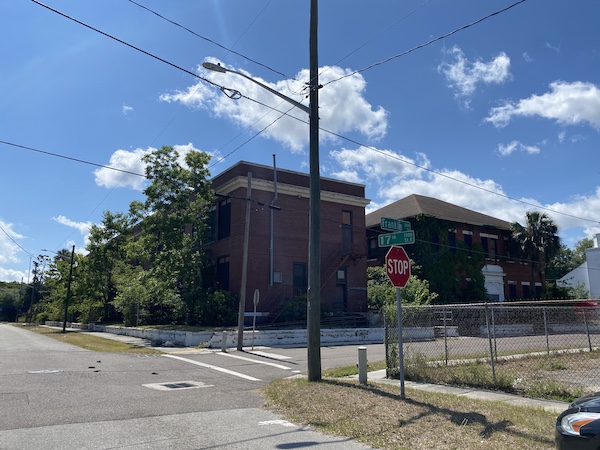Who’s Who in Mandarin, Florida
This old photo was taken in 1956 by the Department of Transportation.

The accompanying note is : Mandarin to Goodbye Lake. Looking north towards the intersection with Loretta Road in Mandarin .”
The days of barren roads and posted mailboxes are almost a thing of the past in Mandarin except for the back-woods, if you can find any. There are some but they are fading fast as development is eating up the county of this once sleepy but thriving community called St Anthony then San Antonio then Monroe and finally some paperwork did the trick with an 1830 paper naming the area Mandarin and finally in 1841, Mandarin became an incorporated town. Many writings indicate Calvin Read as the one responsible for using the Mandarin orange as a reason for its name.
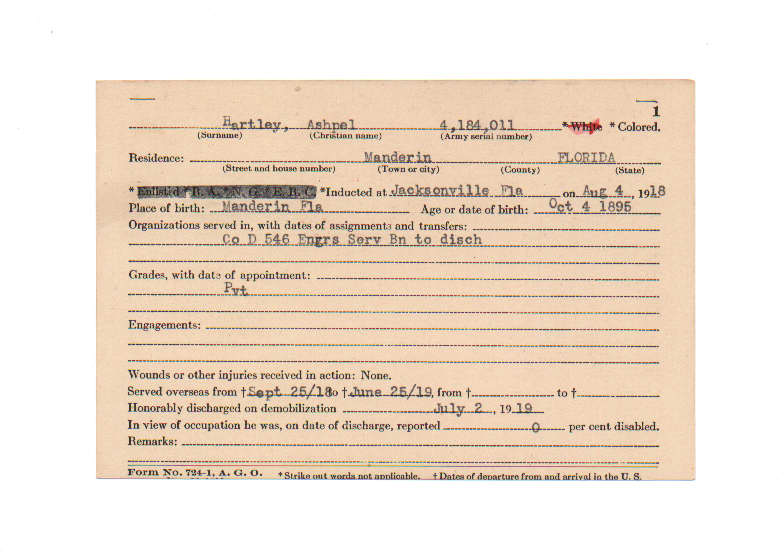
Florida Memory document of Ashpel Hartley indicating Mandarin, Fl
Here are some different things in the Mandarin area and where the names were derived.
Albert’s Field is located at the corner of Orange Picker and Brady Road ( 12073 Brady Road). According to the city of Jacksonville park information, the park opened about 1959 with the majority of the property donated by Bruno (1888-1970) and Ann(1896-1991) Albert. The Alberts were accomplished artists.
Walter Anderson Memorial Park– 2738 Orange Pickers Road. Located about a half of a mile west of San Jose Blvd., there is the park(formerly named Flynn Park) and renamed WAMP in honor of Mr. Anderson. According to Sam Burney, it was called “Colored Park” in the 1940’s and beyond. He said it was where Blacks gathered on May 20th folks to celebrate the Emancipation Declaration in Florida. This park was formerly known as Joe James Park and then Flynn Park and in 2019 renamed Walter Anderson Memorial Park. In 1995, Anderson donated four acres for “park purpose” for Black children to have a gathering place, according to the JaxParks website. Since that time, the park has expanded and is used by the community.
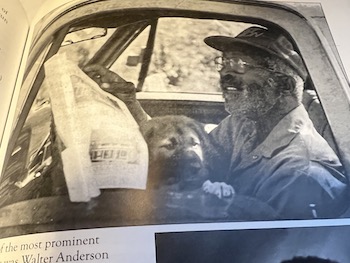
Walter Anderson, Photo- Ramey , 1995
Bethel Methodist Episcopal Church– Established in Mandarin in 1880, the church was mainly white and pastored by P. Y. Howard. Bethel is mentioned in the Bible as “House of God”.
Burney’s Homestead-Corner of Orange Picker and Brady Road. Samuel Rollin Burney was born in Mandarin on Feb. 27, 1931. He died in Mandarin Feb. 2, 2018 and is buried in Lofton Cemetery. He served in the Navy and bought land in Mandarin at the corner of Orange Picker Road and Brady.
Crane Home– Robert N. Dennis collection of stereoscopic views has a photograph of the C.J. Crane home of Mandarin, Florida listed in its collection at the New York Public Library.
Cousin- Philip R. AME– 3601 Orange Picker Road- The Philip R. Cousin AME church began in 1866 at the purchase of 3.25 acres. The deed was recorded on March 21, 1887. The reverend S. T. Tice was the first pastor. “Under the leadership of then presiding Bishop Phip R. Cousin, two congregations were merged”. Reverend E. E. Mosely was appointed pastor. The church was then named in honor of Bishop Cousin. The campus has expanded and in 2007 a new worship center was built.
Flynn Road-Flynn Road was named in honor of the Flynn family dating back to at least 1841 when Adeline Flynn was born to James Plummer who was born in Mandarin in 1795. Adeline was of the Plummer family. As time went along, James J. Flynn a long time Mandarin resident, opened a general store, plus seed and feed establishment in Mandarin. He also had a taxi service running in Duval and St. Johns County.His wife was a Hartley by name.
Hartley Road– The Hartley family have been in Mandarin for many years dating back to Anna Maria Hartley who was born 1795 and died on November 25 1863 in Mandarin. Private Gabriel Hartley was born in 1834 in Mandarin and died July 31, 1904. He is buried at St. Joseph’s Cemetery in Mandarin as are five of his children. The family legacy in Mandarin continued as the documented honourable discharge of Ashpel Hartley, which was his “Christian name” on the document lists his birthplace as, Mandarin October 1895. He died in Mandarin in 1975 and is buried in Mandarin.
Walter Jones Historical Park– 11964 Mandarin Road. This park has out-buildings, houses, a Black school and a museum, all used by the community. It is situated along the St. Johns River and has trails and walkways.
Julington Creek-In 1767, Francis Levett, Sr. developed an area along the St. Johns River including many tributaries. Julington Creek comes from the St Johns River making beautiful land for building homes along the waterways. The area is called “Julington Creek” including the Julington Creek and of late an apartment complex called “The Julington”. The area, according to Ennis Davis was named by Levett for his wife, Julia.
Loretto Road has been thought to align with the name of the “Catholic Sisters of Loretto at the Foot of the Cross”. It was known to support a mission for refugees. That group was founded in 1812.
Mandarin Park– 14780 Mandarin Road- Named for the Mandarin area.
St Johns County– Mandarin was once called St. Johns County until the new districts were drawn up and it became Duval County. The name St. Johns County obviously is because of the prominance of the St. Johns River running north and south in the Mandarin , Duval and St. Johns County area.
Plummer Grant Road– Jacob James Plummer was born in Mandarin in 1795. The family history continues in the area with the Plummer family. The Harley and Flynn families are all a part of early Mandarin pioneer families.
Read House– Read came from New England. Since 1850 he was a farmer, citrus grower, postmaster and land owner. His grandson Calvin C. Built a two-story home on Mandarin Road. It was written about in Wayne Wood’s Jacksonville Architectural Heritage, published in 1989 and is a landmark for Mandarin.
Chuck Rogers Park(11950 San Jose Blvd). Chuck Rogers name in Duval County is synonymous with parks and recreation. He worked in the department for the county for over 41 years.
St. Joseph’s Mission– Named for Joseph the husband of Mary, Jesus Christ’s Mother. There was a mission located at what is often called “Catholic Corner”. White children attended the local school in 1868. After the Civil war in 1898, a schoolhouse was built for Black children. It was built by the Catholic Church in Mandarin.The one room schoolhouse was last used in 1943. In an effort to preserve history, it was moved from the Catholic property in 2016 to Mandarin and County Dock Roads where the Mandarin Museum is located.
Stowe Community Center, Stowe Road- Harriet Beecher Stowe was a famed writer publishing Uncle Tom’s Cabin and owning land in Mandarin. She spent over 17 winter seasons in Mandarin along the St. Johns River on her family property.
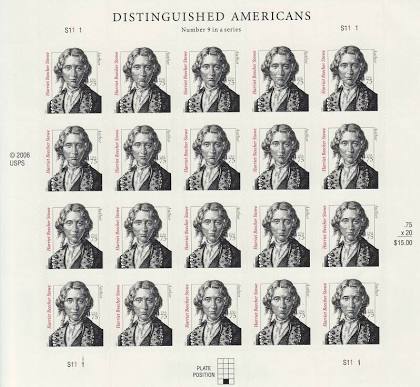
Stamps created in 2007 of of H.B. Stowe
Orange Picker Road was once called “Wagon Road” according to an article written by Marks Woods for the Florida Times Union after a walk and talk with Burney who knew first- hand. It obviously was legal called Orange picker because of the orange groves all along the road long before Harriet Beecher Stowe’s crew picked them.
This will be updates over time.
See you tomorrow,
Nan
Sources: Brett Nolan, Florida Newsline, Mandarin Museum and Historical Society, Florida Times Union, Find a Grave, Personal visit to the locations.
This information including Ramey photos may be used with credit to Ramey Collection. Other photos may be 3rd party for which may be secured by copyrighted owner.
If you believe you are a copyright owner or can help with information regarding this article, including to clarify rights or information issues, please contact me. We are willing to remove any item from public view if there is any concern regarding ownership.
